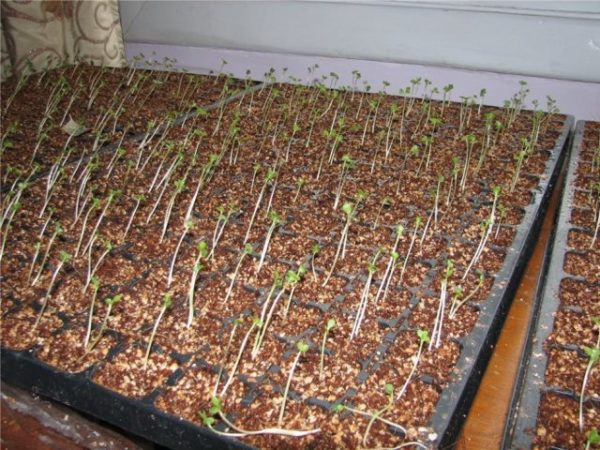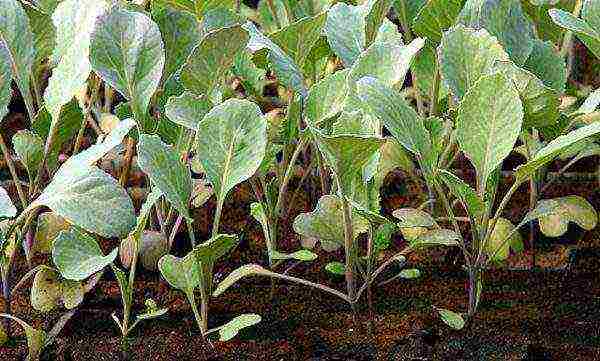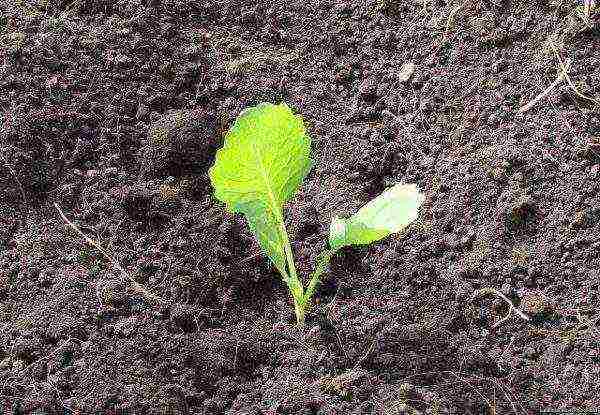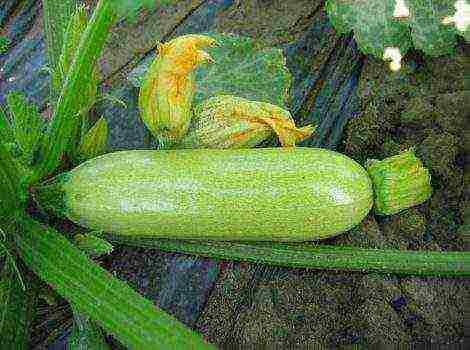Content
What to do if cabbage seedlings are stretched out and how to save them
Cabbage (broccoli and cauliflower) is one of the favorite vegetable crops of gardeners. At any summer cottage, you can certainly find a bed of good, solid cabbage. It is only necessary to grow it in open ground from seedlings, but growing the seedlings themselves is a rather complicated matter. The seedlings are very tender and capricious, sensitive to growing conditions and can greatly outgrow. A little something wrong - it begins to stretch, the sprouts become very thin, unsuitable for planting in the ground. What can you do to save the elongated seedlings? And why is this happening?
The most common reasons why cabbage can outgrow
Growing cabbage outdoors using seedlings is the best option to get the harvest as early as possible and at the lowest cost. Moreover, without seedlings, it is almost impossible to grow a vegetable directly by sowing seeds into the soil. Even in order to get good, strong seedlings in advance for planting, you need to work hard and follow the basic rules of agricultural technology. If you do not know some of the nuances, the cabbage will quickly become thin, faded, stretch up and not tie the heads.

The most important reasons for improper growth are:
- non-compliance with the terms of sowing seeds and planting in the ground;
- lack of sunlight and lack of additional lighting;
- non-observance of the temperature regime during cultivation;
- lack of nutrients in the soil.
Sowing dates
It is very important not to overexpose the seedlings, plant them in open ground on time. It depends on the climatic and weather conditions of each individual region, as well as the variety of cabbage (early, mid or late), the approximate dates range from late April to late May.
Having decided on the exact date of planting, you can calculate the time of sowing seeds, given that 10 days pass from this moment to the emergence of crops (plus or minus a couple of days). For development, about 50-55 days must pass before planting in the soil. Thus, you need to sow seeds 60-65 days before the expected planting of plants in the ground.
Lighting
Cabbage is not only a very light-loving plant, but even requires a lot of light.... With a short daylight hours or insufficient illumination of the room, the sprouts begin to reach for the light, become thin, pale, frail and weak.

Long daylight hours promote rapid growth and formation of heads (heads of cabbage). Normal daylight hours are 12 to 14 hours. It is clear that if the first shoots appeared in early March, natural light will not be enough. Therefore, in the morning and evening hours, additional illumination is recommended for 2-2.5 hours.
Temperature regime
Unlike light, cabbage does not like heat, and does not tolerate heat at all. At high temperatures in the room where it grows, cabbage begins to stretch and dies.
After sowing the seeds, the containers are covered with foil and kept at a temperature of 18-20 degrees. As soon as the first shoots appear, the containers with the plant are transferred to a room with a temperature of no higher than 8-10 degrees and kept in such conditions until the true first leaf appears.Then they can be returned to warmer conditions, put on a window, observe the temperature regime - during the day + 15-18 degrees, at night - + 6-8 degrees.
Nutrition and feeding
Cabbage is very demanding and sensitive to feeding throughout the entire ripening period. First of all, it is necessary to correctly formulate a soil mixture for sowing seeds:
- sod land - 50%, you can buy land in a store or even take it from the garden, but not from cruciferous crops (cabbage, radishes); since these plants are susceptible to all kinds of diseases, the soil can also be contaminated; for fidelity, it is better to ignite it in the oven and cool;
- 50% humus;
- add 100 g of sand (well washed), 1 tablespoon of wood ash (as an antiseptic), superphosphate, dry chicken droppings to a bucket of such a mixture.

Already during the appearance of the first 2-3 leaves, the seedlings must be fed again. One glass of chicken manure and ash is diluted in 10 liters of water and the sprouts are watered, but excess moisture must not be allowed. The next top dressing is during the pick, i.e. transplanting into separate pots (cups).
At the same time, seedlings are pinned - the taproot is shortened by 1/3. This slows down the development of plants, all forces are spent on restoring the root system, and the stem thickens, becomes more massive.
Compliance with all these rules serves as an excellent prevention of pulling seedlings.

What to do and how to save elongated and overgrown seedlings?
If, nevertheless, you did not keep track, and the seedlings were noticeably stretched out, it needs to be urgently transplanted into separate containers or (if time permits) into open ground, dropping it as deep as possible into the ground (up to the first leaves). Reduce temperature to 4 degrees. In this case, you can make pinching by shortening the root by almost half, and limit watering. The sprouts will undergo shock and slow down for a long time in growth. After about three weeks, the root system will be restored, the sprouts will begin to grow again and a small amount of fertilization will need to be applied.
Good lighting, low temperatures, limited watering, and occasional fertilization will help the cabbage recover.
According to expert experts, cabbage seedlings are the most demanding for proper care, and it is rather difficult to grow them. But focusing on the basic rules, it is quite possible to get both good planting material and an excellent harvest. Delicious and healthy cabbage dishes will be on your table all year round.


